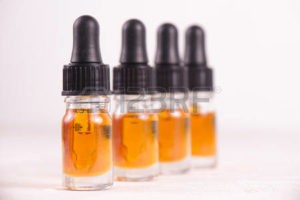- You are here:
- Home »
- Blog »
- non-conventional therapies »
- Cancer Coaching- Endometrial Cancer-C-B-D oil Complementary Therapy?
Cancer Coaching- Endometrial Cancer-C-B-D oil Complementary Therapy?

“Selective targeting of TPRV1 by AEA, C-B-D, or other stable analogues may be an attractive research area for the treatment of estrogen-dependent endometrial cancer.”
Dear Cancer Coach: I am post op stage 2 endometrial cancer, estrogen hormone positive, grade 1. I have read that T-H-C can cause hormonally driven cancers to spread. I have seen conflicting advice on this. One site recommended 4:1 C-B-D to T-H-C. Do u agree with this? I may need a coach. Karen
Hi Karen- Several things. I am sorry to learn of your endometrial cancer. Surgically removing your tumor is an excellent way to reduce your tumor burden. The next step is to learn about both conventional (FDA approved) and evidence-based, non-conventional therapies to fight your cancer.
Regarding your question about C-B-D/T-H-C, the study linked below, explains that C-B-D/T-H-C has anti-endometrial properties in-vitro. While the study below does not specifically address the issue of “hormonlly driven cancer to spread”, the article does say that C-B-D/T-H-C has:
“Selective targeting of TPRV1 by AEA, C-B-D, or other stable analogues may be an attractive research area for the treatment of estrogen-dependent endometrial carcinoma.”
As for the specific strain and/or ratio, I think the most important factor (according to studies) is the percentage of cannabinoids IN the C-B-D oil. In other words, the C-B-D oil that you reference may have only 1 or 2 percent of cannabinoids in the oil and therefore do very little for you. My understanding is that the C-B-D oil should have upwards of 10-20% cannabinoid content.
I have read studies that cite small amounts of T-H-C as enhancing the anti-cancer activity of C-B-D but some people just don’t like the psychotropic feeling of T-H-C. This is why a C-B-D oil of a 4:1 ratio may have been recommended to you. This is your call.
Lastly, my experience as a long-term cancer survivor is that it is important to add additional evidence-based, non-conventional therapies to your regimen. Therapies such as anti-angiogenic nutrition, nutritional supplementation, frequent moderate exercise, etc. are the reason why I am in long-term remission from my incurable cancer. Curcumin is a great example of an evidence-based, non-toxic therapy as the study below explains.
Let me know if you have any other questions.
David Emerson
- Cancer Survivor
- Cancer Coach
- Director PeopleBeatingCancer
Recommended Reading:
- 5 High Cannabinoid Percentage C-B-D Oil Strains for Cancer
- Cancer Coaching Testimonials- PeopleBeatingCancer
- Discover the Health Benefits of C-B-D
Cannabinoid-induced cell death in endometrial cancer cells: involvement of TRPV1 receptors in apoptosis.
“The purpose of the present study was to characterize cannabinoid elements and evaluate the effect of cannabinoids in endometrial cancer cell viability…
These data indicate that cannabinoids modulate endometrial cancer cell death. Selective targeting of TPRV1 by AEA, CBD, or other stable analogues may be an attractive research area for the treatment of estrogen-dependent endometrial carcinoma. Our data further support the evaluation of CBD and CBD-rich extracts for the potential treatment of endometrial cancer, particularly, that has become non-responsive to common therapies…”
Curcumin suppresses migration and invasion of human endometrial carcinoma cells
“The purpose of this study was to detect the anti-metastatic effects of curcumin and the associated mechanism(s) in EC. Based on assays carried out in EC cell lines, it was observed that curcumin inhibited EC cell migration and invasion in vitro…
Combined treatment with ERK inhibitor U0126 and curcumin resulted in a synergistic reduction in MMP-2/-9 expression; the invasive capabilities of HEC-1B cells were also inhibited. In conclusion, curcumin inhibits tumor cell migration and invasion by reducing the expression and activity of MMP-2/9 via the suppression of the ERK signaling pathway, suggesting that curcumin is a potential therapeutic agent for EC…”



